| Technical Track A | ||
| 5:00pm - 6:00pm |
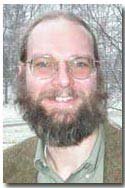
Detection of Anthropogenic Signals of Below Thermal Noise PowerRodger D. De Roo, Ph.D. Asst Scientist & Lecturer Department of Atmospheric, Oceanic and Space Sciences University of MichiganSpace-borne microwave radiometry is a technique for global measurement of geophysical parameters like snow pack depth, sea surface temperature, sea surface salinity, and soil moisture. However, radio frequency interference (RFI) is a major problem for microwave radiometers, especially at the longer wavelengths in the L- through X-bands. As this RFI is always additive, the presence of undetected RFI can bias the geophysical parameter retrieval. As radiometers have the most sensitive receivers operating in their band, low levels of RFI are both significant and difficult to identify. New space borne radiometers operating in these bands are being developed, such as for the Soil Moisture Active and Passive (SMAP) mission. Digital reception of the pre-detected IF signal has been demonstrated to have great ability to permit the detection of many forms of RFI. For example, with the calculation of the kurtosis statistic of the IF signal, continuous wave RFI and radar-like pulsed RFI can be distinguished, and the potential exists for detecting the pulsed RFI at levels comparable to a radiometer s noise equivalent radiometric uncertainty (NEDT). This presentation will describe the use of the kurtosis statistic to identify RFI in radiometric signals. Roger D. De Roo received the B.S. in Letters and Engineering degree from Calvin College, Grand Rapids, MI, in 1986, the B.S.E., M.S.E., and Ph.D. degrees from the University of Michigan in 1986, 1989, and 1996 respectively, all in electrical engineering. His dissertation topic was on the modeling and measurement of bistatic scattering of electromagnetic waves from rough dielectric surfaces. From 1996 to 2000, he was employed as a Research Fellow at the Radiation Laboratory in the Department of Electrical Engineering and Computer Science (EECS) of the University of Michigan, investigating the modeling and simulation of millimeter wave backscattering phenomenology of terrain at near grazing incidence. He is currently an Assistant Research Scientist and Lecturer in the Department of Atmospheric, Oceanic and Space Sciences (AOSS) at the University of Michigan. His current research interests include digital correlating radiometer technology development, radio frequency interference mitigation, inversion of geophysical parameters such as soil moisture, snow wetness and vegetation parameters from radar and radiometric signatures of terrain, and ground truth techniques for those geophysical parameters. He is a member of IEEE and AGU. Chapter 06 |
|
| 6:00pm - 7:00pm |
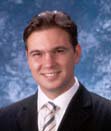
Sensor Interfaces: Interfacing with Human BodyDr. Selcuk TalaySensors provide environmental information from the physical world that we live in to the electronic circuits that we have the processing power. Whether it is digital or analog processing afterwards, interfacing the sensors with the electronic circuits introduces stringent constraints such as ultra low-power consumption, excellent noise performance and accurate acquisition of the signals from the sensor node. Thus, interface circuit design requires advanced circuit and system level design techniques depending on the sensor type. This talk will cover different types of sensor interface circuits such as low-noise, low-power amplifier for bio-potential recording system and low-power, multi-path, complex, bandpass sigma-delta ADC circuit for body area networks. The main focus will be on the sensor interface design challenges and novel solutions. Selcuk TALAY(M'08) received his M.Sc. and Ph.D. degrees in Electrical and Electronics Engineering from Bogazici University, Turkey . He served as a research assistant at BETA laboratory in Bogazici University where he carried out his M.Sc. and Ph.D. research on analog design automation and interface circuit design and optimization. In Feb. 2008, he joined Prof. Franco Maloberti's group at University of Pavia, Italy as postdoctoral research associate. At IMS Laboratory, he worked on sensor interface circuits, especially high-speed and low-power ADC circuits. In Aug. 2009 he joined e-lab at Yale University as a postdoctoral research associate where he worked on hardware implementation of complex data flow computer systems for synthetic vision and bio-potential recording circuits with UWB transmitters. His research interests include sensor interface circuits, analog design automation, mixed-signal design techniques and modeling of non-linear circuits. He is an active member of IEEE and CASS for more than 10 years. Chapter 01 |
|
| Technical Track B | ||
| 5:00pm - 6:00pm |
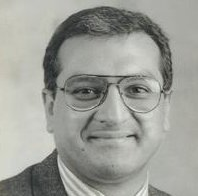
Vision Guided Robotics (VGR) for Manufacturing EfficienciesAdil Shafi, President of Advenovation, Inc.Vision Guided Robotics, or VGR, is a technology that has matured well in industrial factories in the past decade. Through a series of technical and commercial succeses, VGR is now used commonly in factories. The technology can be classified into 2D and 3D solutions. This presentation will showcase the benefits, components, and example applications replete with movies. The presentation will also cover perspectives on good practices for implementation. Adil Shafi is President of Advenovation, Inc. He has more than 23 years of experience in the manufacturing automation business. In this capacity, he and his team have made many innovations and made them reliable for everyday use in factories. These innovations have helped many factories to stay in operation in the US and maintain jobs and retrain workers for higher paying jobs. Aside from the automotive sector, Mr. Shafi and his team have worked on food robotics, semiconductor solutions and aerospace projects such as F-35 fighter jets and the Orion Space Program which will replace the Space Shuttle Program. Chapter 05 |
|
| 6:00pm - 7:00pm |

A Hierarchical Framework for Audio ForensicsDr. Hafiz Malik, Assistant Professor, Electrical and Computer Engineering Department, University of Michigan - DearbornThe use of digital media (audio, video, and images) as evidence in every sector of litigation and criminal justice is becoming the norm. For digital media to be admitted as evidence into a court of law, its authenticity and integrity must be verified. This requirement is a complex and challenging task, especially if there are no helping data, such as digital watermarks or fingerprints, and if the media is only available in a compressed format. The availability of powerful, sophisticated, and easy-to-use digital media manipulation tools has made authenticating the integrity of digital media even more difficult. In this context, digital media forensics aims to determine the underlying facts about an evidentiary recording and to provide authoritative answers to various questions, such as the following:
Hafiz Malik is Assistant Processor in the Electrical and Computer Engineering (ECE) Department at the University of Michigan - Dearborn . His research in multimedia forensics and security, intelligent video surveillance, wireless sensor networks, steganography/steganalysis, and biometric security is funded by the National Academies and other agencies. He has published more than 40 papers in leading journals, conferences, and workshops. He is serving as vice president of IEEE SEM, Chapter XVI from 2012. He has served as a secretary of the IEEE SEM, Chapter III from 2009 l 2011. Dr. Malik is the member of the Review Board Committee of IEEE Technical Committee on Multimedia Communications (MMTC) . He has also organized Special Track on Doctoral Dissertation in Multimedia, in the 8th IEEE International Symposium on Multimedia (ISM) 2006 . Dr. Malik is also serving on several technical program committees, including the IEEE AVSS, ICME, ICASSP, ICIP, MINES, ISPA, CCNC, and ICC. Further information about his research can be found at https://www-personal.engin.umd.umich.edu/~hafiz/. Chapter 16 |
|
| Technical Track C | ||
| 5:00pm - 6:00pm |

ARRL and Real World EMC ProblemsEd Hare, Laboratory Manager, ARRLARRL, the national association for Amateur Radio, helps the Amateur Radio Service address EMC problems. In this presentation, Ed Hare, W1RFI, ARRL's Laboratory Manager, explains the many different ways that ARRL helps do this. Its help for amateurs also extends into helping industry resolve interference problems, from the creation of good industry standards to the development of case-by-case solutions should problems still occur. Ed Hare, W1RFI, is employed by ARRL, the National Association for Amateur Radio. With 16 years experience in the electronics industry, he came to ARRL HQ in 1986. He started as ARRL's "Product Review" test engineer, moved on to becoming ARRL's "RFI guru" (notice his call!) and he now holds the position of Laboratory Manager. Over the years he has written quite a number of EMC articles, ranging from articles for QST and the "ARRL Handbook" to articles about the practical aspects of EMC that have appeared in professional trade journals. He is also one of the editors and authors of the ARRL "RFI Book" and the author of the ARRL's book on RF exposure, "RF Exposure and You." He is very active in several EMC programs at ARRL, holding voting membership on the IEEE EMC Society Standards Development Committee as elected Secretary, the ANSI accredited C63® Committee as the Vice Chair of the immunity subcommittee, the IEEE P1775 BPL EMC committee and others, representing ARRL and the interests of Amateur Radio as industry standards are developed. He is a member of the IEEE Standards Association, the IEEE EMC Society, the IEEE Communications Society and the IEEE Power and Energy Society. His personal Amateur Radio operating interest is low-powered CW, where Ed's motto is, "Five Watts is a Lot of Power!" He is presently doing work on HF using 10 milliwatts, reporting having made contact with 30 states from New England. Chapter 08 |
|
| 6pm - 7pm |
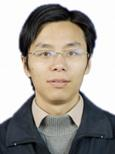
A Joint Model and SOC Estimation Method for Lithium Battery Based on the Sigma Point KFDr. ZhiWei He, Associate Professor, Hangzhou Dianzi University, Hangzhou, China, Department of Electronic and Information EngineeringLithium-ion batteries have been widely used in electric vehicles (EV). The working state of the battery is very important to the safety of an EV. Online estimation of the state of charge (SOC) is essential in obtaining the battery working conditions. In order to achieve an accurate estimation of the SOC, the battery model should be adjustable when the battery is aged. A joint battery model and SOC estimation method based on the Sigma Point Kalman Filter (SPKF) is presented. A combined battery model is used to depict the relationship between the open circuit voltage (OCV) and the SOC of the battery. The main battery model parameter for estimation is the internal resistance and it is jointly estimated with the SOC online. Experimental results show that the SPKF based joint estimation method is effective. Zhiwei received the B.S. Ph.D. degrees from Zhejiang University, China in 2001 and 2006, respectively, both in information and communication engineering. From July 2004 to August 2004, he was selected in a student exchange program sponsored by the Ministry of Education of China and worked as an intern at the Hongkong Polytechnic University. From March 2005 to November 2005, he worked as intern at Huawei-3com. Since June 2006, he has been with the Hangzhou Dianzi University, Hangzhou, China, where he is currently an associate professor in the Department of Electronic and Information Engineering. His current research interests are in the areas of nonlinear signal processing, vehicle electronics, intelligent transportation systems. Chapter 07 |
|
| Professional Track D | ||
| 5:00pm - 6:00pm |
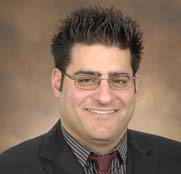
Sliding Mode Observer Design for Robotics and Automotive ApplicationsDr. Giscard Kfoury, Director, BS in Robotics Engineering Program, Lawrence Technological UniversityThe implementation of efficient control schemes often requires the availability of accurate measurements of the state variables of the system. These measurements are usually not readily available due to reasons ranging from the high cost of sensors, to the lack of space or difficulty in mounting them, or simply due to inaccuracies in the measurements. As an alternative, estimators or observers can be designed to provide accurate estimates of the state variables appropriate for use by the controllers. The task of designing such observers can become very challenging when dealing with nonlinear systems, especially in cases where modeling uncertainties are present. This work presents various robust nonlinear observer designs based on the sliding mode or variable structure theory. These estimators are adequate for use with nonlinear systems that feature both parametric and structured uncertainties, and only require the knowledge of an upper bound on the modeling errors to produce accurate state variable estimates. Two applications are presented here: a design of a robust observer for a single-link flexible robotic manipulator, and a sliding mode observer design for a constrained single-cylinder engine crank-slider mechanism. Digital simulations are presented to assess the performance of the proposed designs. Dr. Kfoury Joined Lawrence Technological University in 2008 as an assistant professor in the Mechanical Engineering department. He received a BEME from the American University of Beirut in 2001, a Master of Science in Mechanical Engineering from Wayne State University in 2003, and a Ph.D. in Mechanical Engineering from Wayne State University in 2008. His areas of expertise are nonlinear control, nonlinear observer design, modeling and simulation, dynamics, vibration analysis, robotics, and engine dynamics and vibration.Dr. Kfoury is a member of ASME (active member of the DSC Model Identification and Intelligent Systems (MIIS) Technical Committee), SAE and ESD, and has published papers in numerous journals and conferences. He has done extensive research in the areas of robotic manipulator control and observer design, engine vibration and friction estimation, and experimental engine friction measurement. His current research interests include hybrid powertrain modeling, analysis and control, active suspension systems, robotics, and unmanned vehicle modeling and control. Dr. Kfoury is the director of the Bachelor of Science in Robotics Engineering program at LTU and he also serves as the faculty advisor for the Formula SAE team at LTU. Chapter 12 |
|
| 6:00pm - 7:00pm |
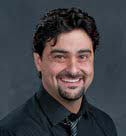
Smart Materials for Smart MicrosystemsDr. Nelson SepúlvedaMicroelectromechanical or nano-electromechanical systems (MEMS or NEMS, respectively) have demonstrated several advantages over the solid-state device counterparts in a broad spectrum of applications including radio-frequency systems and biomicrofluidics, but particularly in the highly multidisciplinary research area of transducers -i.e. sensors and actuators-. The evolution of micrometer sized transducers started with the fabrication of silicon pressure sensors in the 1960s and since then the efforts have been directed towards their miniaturization. With time, the technological advances allowed by this "miniaturization" research trend have been combined with the use of new materials, giving rise to very successful science-engineering research philosophies. Recent developments on smart materials have demonstrated to be capable of revolutionizing the field of micrometer sized transducers by allowing for new actuation mechanisms, and the abrupt -and simultaneous- change of multiple properties due to their multifunctional characteristics. Our group has reported a new and transformative technology based on vanadium dioxide (VO2) thin film coatings. We recently found that, in addition to the well-known changes in the electrical and optical properties of VO2 films, their mechanical properties also change abruptly during their solid-solid phase transition. This observation unveils a new operation principle for micrometer sized transducers, which is capable of overcoming the performance limitations imposed by the physical mechanisms that govern the currently state-of-the-art technologies in thermal- and optical-based micro-transducers (e.g. thermal expansion coefficient differences). After characterizing our VO2 thin films, we implemented this technology on laser- and thermal-actuated micrometer cantilevers, opto-electronic and all-optical multiple memory state devices, and tunable MEMS resonators. Prof. Nelson Sepúlveda obtained his undergraduate degree in Electrical and Computer Engineering from the University of Puerto Rico, Mayaguez Campus in 2001 with honors. He completed his M.S. (2002 and PhD (2005) degrees in Electrical and Computer Engineering at Michigan State University. From January 2006 to June 2011, Dr. Sepúlveda was faculty at the University of Puerto Rico - Mayaguez, and during this time participated in several summer research programs for faculty at the Air Force Research Laboratories (2006 and 2007), National Nanotechnology Infrastructure Network (NNIN) (2008) and the Cornell Center for Materials Research (CCMR) (2009). In 2010, he was awarded the NSF Career award. His research interests are micro and nanometer-sized sensors and actuators (or transducers), characterization of smart and multifunctional materials and their integration in microsystems. Chapter 17 |
|
